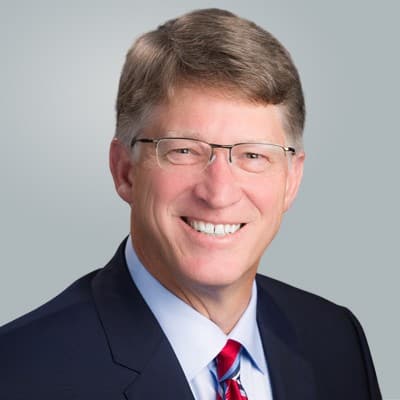Customer Logins
Obtain the data you need to make the most informed decisions by accessing our extensive portfolio of information, analytics, and expertise. Sign in to the product or service center of your choice.
Customer Logins
BLOG
Nov 28, 2017
Powell confirmation process: Smooth sailing
Governor Jerome Powell testified this morning before the Senate Banking Committee, which is considering his nomination to be the next Chairman of the Federal Reserve. From the Governor's perspective, the hearing generally went smoothly. Several Senators on both sides of the aisle either explicitly or implicitly expressed support for his nomination. Governor Powell's responses covered several important topics.
Fed independence and relationship with Congress
In response to questions regarding policies on fiscal issues, immigration, and labor-force incentives, he took a mostly hands-off approach, underscoring that these were generally issues that Congress was better equipped to address than the Fed. This should be seen in the context of Powell's support for the Fed's independence, a theme that also arose when he pushed back against "Audit the Fed" legislation. Nevertheless, he did express a traditional view that higher government debt, all else equal, would drive up borrowing costs and crowd out investment.
Banking regulation and supervision
- He expressed support for easing some banking regulation and supervision. In his view, bank regulations are "tough enough."
- He favors reducing or eliminating prohibitions on proprietary trading for small banks.
- He supports raising the threshold for stress tests to banks with at least $100 billion in assets. He would favor continuing stress tests for banks between $100 billion and $250 billion in size, but at a less demanding level than for systemically important financial institutions.
- When asked directly, he opined that there were no longer any too-big-to-fail financial institutions in the United States.
- He explained that cost-benefit analysis of regulatory implementation will be important going forward, and that the Federal Reserve had developed its expertise in this area. This hints at an interest in reducing some regulatory burdens, especially for financial institutions that are not deemed to be systemically important.
- He described a close personal relationship with and strong respect for Randal Quarles, the new Fed Governor and Vice Chairman for Supervision. He expects Governor Quarles to take the lead on international coordination of capital requirements and other issues related to financial supervision.
Economic outlook
- He views labor markets as being approximately at full employment, but observed that moderate wage growth suggests that labor markets are not over-heating.
- He expects GDP growth of around 2½% in both 2017 and 2018, suggesting that he expects labor markets to continue to tighten.
- He reiterated that some of the recent softness of inflation was a surprise, and that there is an active discussion within the Federal Reserve about the extent to which soft inflation reflects transitory as opposed to more structural or persistent factors. He did not suggest that it was appropriate to abandon inflation forecasting grounded in a Phillips-curve type relationship between inflation and labor-market slack.
Fed interest-rate and balance-sheet policies
- Governor Powell signaled that he does expect the FOMC to favor a rate hike at the policy meeting next month. He also stressed that it is time to normalize - to continue to remove accommodation gradually, both with respect to interest rates and the balance sheet.
- He issued a general guideline that the Fed's balance sheet will likely shrink to a range of approximately $2½ to $3 trillion, and that it could take approximately 3 to 4 years to reach that level. He also stressed that public demand for the Fed's liabilities will be an important determinant for the size of the Fed's balance sheet over the longer run.
- He was not asked about whether there would be changes to the Fed's operational methods for influencing interest rates, which is related to the size of bank reserves and the Fed's balance sheet once it normalizes.
Ken Matheny is an Executive Director of US Economics at Macroeconomic Advisers by IHS Markit
Posted 28 November 2017
{"items" : [
{"name":"share","enabled":true,"desc":"<strong>Share</strong>","mobdesc":"Share","options":[ {"name":"facebook","url":"https://www.facebook.com/sharer.php?u=http%3a%2f%2fstage.www.spglobal.com%2fmarketintelligence%2fen%2fmi%2fresearch-analysis%2fpowell-confirmation-process-smooth-sailing.html","enabled":true},{"name":"twitter","url":"https://twitter.com/intent/tweet?url=http%3a%2f%2fstage.www.spglobal.com%2fmarketintelligence%2fen%2fmi%2fresearch-analysis%2fpowell-confirmation-process-smooth-sailing.html&text=Powell+confirmation+process%3a+Smooth+sailing","enabled":true},{"name":"linkedin","url":"https://www.linkedin.com/sharing/share-offsite/?url=http%3a%2f%2fstage.www.spglobal.com%2fmarketintelligence%2fen%2fmi%2fresearch-analysis%2fpowell-confirmation-process-smooth-sailing.html","enabled":true},{"name":"email","url":"?subject=Powell confirmation process: Smooth sailing&body=http%3a%2f%2fstage.www.spglobal.com%2fmarketintelligence%2fen%2fmi%2fresearch-analysis%2fpowell-confirmation-process-smooth-sailing.html","enabled":true},{"name":"whatsapp","url":"https://api.whatsapp.com/send?text=Powell+confirmation+process%3a+Smooth+sailing http%3a%2f%2fstage.www.spglobal.com%2fmarketintelligence%2fen%2fmi%2fresearch-analysis%2fpowell-confirmation-process-smooth-sailing.html","enabled":true}]}, {"name":"rtt","enabled":true,"mobdesc":"Top"}
]}





